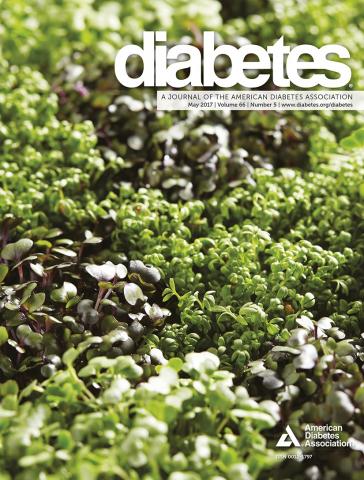 A diabetes researcher who once sued a publisher to prevent several retractions has just issued his 12th.
A diabetes researcher who once sued a publisher to prevent several retractions has just issued his 12th.
The latest retraction, like several others for Mario Saad, appears in the journal Diabetes. Although in the past Saad expended considerable effort to protect four other Diabetes papers from this same fate, the latest retraction was initiated by the authors, citing several duplicated images. The American Diabetes Association had flagged the 2009 paper with an expression of concern earlier this year.
In 2015, Saad brought a lawsuit against the ADA, claiming that it “wrongfully published” four expressions of concerns in its flagship journal Diabetes, in an attempt to prevent the papers from being retracted. He lost, and the papers were retracted in 2016.
The lawsuit also did nothing to deter the ADA from flagging other potentially problematic papers with expressions of concerns, including the latest 2009 Diabetes paper, on which Saad is last and corresponding author. The EOC appeared in February, when the publisher alerted readers to questions about several Western blots, which appeared to be duplicated within the paper and in other papers of Saad’s. The ADA’s ethics panel contacted Saad “to inform him of these concerns” and asked the University of Campinas in São Paulo, Brazil, where Saad is based, to investigate. According to the EOC notice:
Diabetes will make a final decision on the publication status of this article after the journal obtains more information on the reliability of the data and conclusions presented…
Although Diabetes has initiated retractions of Saad’s papers in the past — often against his wishes — in this instance, Saad requested the retraction. Christian S. Kohler, of the ADA’s ethics committee, explained:
After the journal published an expression of concern about this article, Dr. Saad independently contacted ADA to submit a retraction notice. Dr. Saad’s retraction notice was reviewed and approved for publication by ADA’s Panel on Ethical Scientific Programs (ESP).
We contacted Saad, who acknowledged the email but did not comment further.
Here’s the retraction notice, which flags the same image duplications cited in the expression of concern:
The above-cited article has been retracted by the authors. An expression of concern in the April 2017 issue of the journal (Diabetes 2017;66:1098; https://doi.org/10.2337/ db17-ec04a) alerted readers to the following anomalies:
Lanes 5–8 of the Total Akt strip in Fig. 2G and the IB:IKKb strip in Fig. 3B appear to be duplicates, and these images appear to have been previously published in the IB: Foxo1 strip of Fig. 5A in the following paper:
∘ Ropelle et al. J Physiol 2009;587:2341–2351. DOI: 10.1113/jphysiol.2009. 170050. PMID: 19332486
Bands 3–8 in the Total Akt strip in Fig. 2I appear to have been later republished, with horizontal rotation, as the IB:Tub strip in Fig. 1B (LH) in the following paper:
∘ Prada et al. Diabetes 2013;62:137–148. DOI: 10.2337/db11-1388. PMID 22966070
Lanes 2 and 3 of the IP:EGFR strip in Fig. 5D appear to be duplicates of lanes 2 and 3 of the IB:Caveolin strip in Fig. 5E.
The authors no longer have the original figures for the first two issues cited above and have therefore decided that the best course of action is to retract the article. The authors apologize to the scientific community and will seek to publish another article to corroborate the findings of this work.
“EGFR Tyrosine Kinase Inhibitor (PD153035) Improves Glucose Tolerance and Insulin Actionin High-Fat Diet–Fed Mice” has been cited 36 times (three times since the EOC appeared in February), according to Clarivate Analytics’ Web of Science, formerly part of Thomson Reuters.
Like Retraction Watch? Consider making a tax-deductible contribution to support our growth. You can also follow us on Twitter, like us on Facebook, add us to your RSS reader, sign up on our homepage for an email every time there’s a new post, or subscribe to our new daily digest. Click here to review our Comments Policy. For a sneak peek at what we’re working on, click here.
Great work people – I’m prepared the accept the use of a goldfish in place of mangetic server issued on April 1st has a place…. but we NEED to add confidence factor to go with impact factor. Impact factor & retractions of sources, and so on.